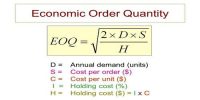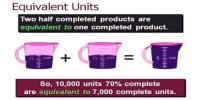The behavior of costs is seen with respect to the change in volume. On this basis, costs are classified into Fixed Costs, Variable Costs, and Semi-variable Costs. Fixed costs do not change with a small change in volume, variable costs do change. Semi-variable costs have characteristics of both fixed and variable costs.
Cost behavior refers to the way different types of production costs change when there is a change in the level of production. There are three main types of costs according to their behavior:
(a) Fixed Costs: Fixed costs are those which do not change with the level of activity within the relevant range. These costs will incur even if no units are produced. For example rent expense, straight-line depreciation expense, etc.
(b) Variable Costs: Variable costs change in direct proportion to the level of production. This means that the total variable cost increase when more units are produced and decreases when fewer units are produced. Although variable in total, these costs are constant per unit.
(c) Mixed Costs: Mixed costs or semi-variable costs have properties of both fixed and variable costs due to the presence of both variable and fixed components in them. An example of mixed cost is telephone expense because it usually consists of a fixed component such as line rent and fixed subscription charges as well as variable cost charged per minute cost. Another example of mixed cost is a delivery cost which has a fixed component of depreciation cost of trucks and a variable component of fuel expense.
Since mixed cost figures are not useful in their raw form, therefore they are split into their fixed and variable components by using cost behavior analysis techniques such as High-Low Method, Scatter Diagram Method and Regression Analysis.
















